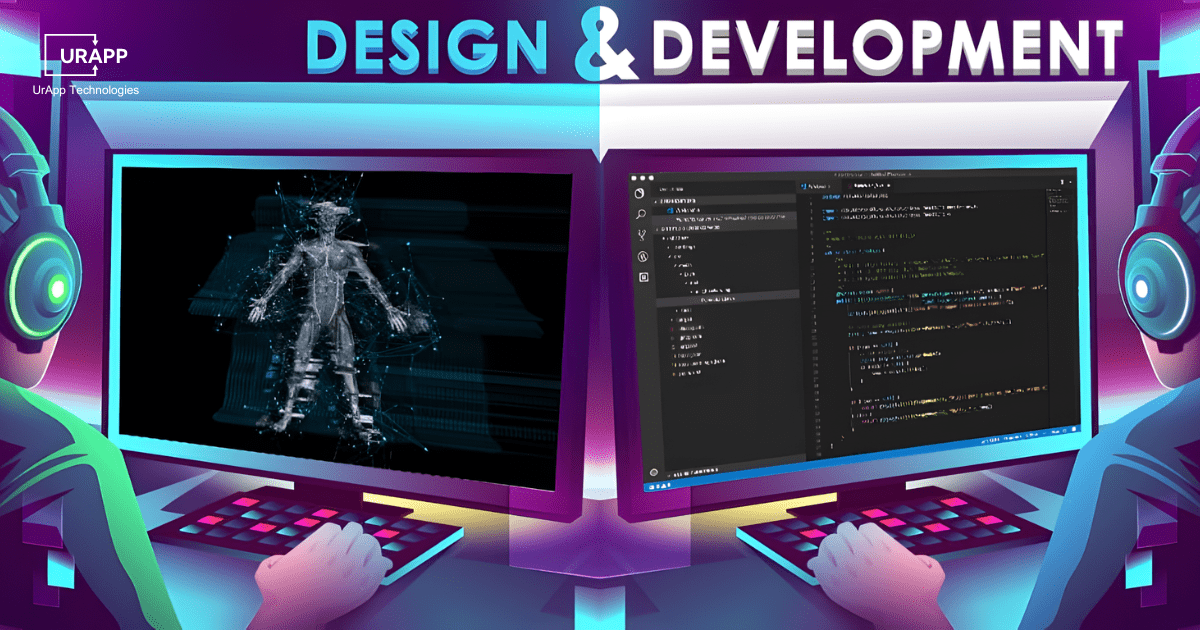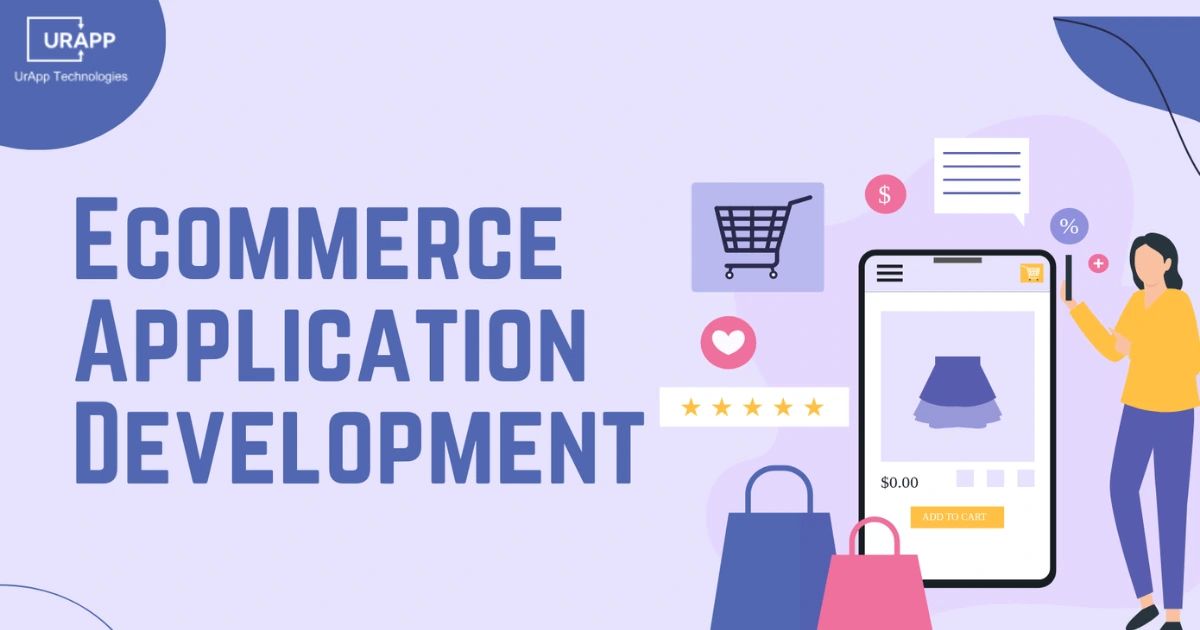SaaS Application Development Guide 2025
These days, every company wants to provide smooth software experiences. SaaS application development enables businesses to provide online software access without the hassles of installation or upkeep. Because of its scalability, versatility and ease of updates, it is a common choice for both startups and large corporations.
This guide benefits readers who want to explore how a SaaS application development company plans, builds and maintains modern cloud based solutions for different industries.
It covers the meaning of SaaS, benefits, main development steps, cost factors, challenges and the future of SaaS technology.
Market Stats
It's no secret that SaaS adoption has increased dramatically worldwide. By 2030, the size of the entire SaaS market is anticipated to reach $908.2 billion, which shows the strong demand for services that require a subscription.

In 2025, 61% of the market will be held by large businesses. To increase productivity, cut expenses and maintain flexibility in cutthroat marketplaces, they employ SaaS platforms.
SaaS adoption in 2024 was driven by the telecom and IT industries. Based to a PwC survey, 84% of IT executives think SaaS platforms are more secure than on-premises solutions. Additionally, 57% of telecom firms used apps powered by AI to enhance operational control and service quality.

Source: fortunebusinessinsights
A Brief Overview of Software as a Service (SaaS) Development
Software as a Service (SaaS) distributes apps online rather than necessary local installations. With the right login information, users can access software on any connected device. SaaS application development focusses to develop cloud based products that are scalable, accessible and allow for regular feature updates without the need for human setup.
SaaS application development is used by businesses to cut expenses, expedite delivery and expand their product reach. Businesses pay regular payments for subscriptions rather than get expensive licenses. This method guarantees quick growth of the product while it simplifies management.
Financial, healthcare, education and ecommerce are just a few of the areas that current SaaS systems cover. They help users boost productivity, automate tasks and ensure consistent performance across platforms.
How SaaS Differs from Installed Software?
-
SaaS platforms store data in the cloud, while installed software stores data locally on company servers.
-
Users pay monthly or yearly subscriptions, usually starts at $20 to $200 per user, instead of one-time purchases.
-
SaaS updates automatically from the provider’s server, while installed software needs manual version upgrades.
-
SaaS requires only internet access, while traditional software depends on installation and system compatibility.
Benefits of Building SaaS Applications
Better user experiences, scalability, and recurring revenue are just a few of the quantifiable business benefits that come with developing a SaaS service. It assists businesses in that provides dependable services that adapt to the needs of users. A seasoned SaaS application development company makes sure every product fits the objectives of client pleasure, cost effectiveness and performance. These advantages work together to create a solid basis for future stability and growth.
Greater Value for Customers
-
A SaaS application provides instant access to software from any device, which allows users to save setup time and reduce upfront costs.
-
Customers experience faster adoption because updates and improvements occur automatically without needing manual installation.
-
Affordable subscription plans make premium features accessible to smaller businesses, which improves retention and satisfaction rates.
-
Studies show customer lifetime value can increase by 25% to 30% with improved user convenience and service reliability.
-
Strong performance and quick access to updates enhance trust and results in sustained customer relationships and positive brand reputation.
Larger Customer Base and Scale
-
SaaS solutions allow companies to reach a global customer base using one shared platform hosted on the cloud.
-
Thousands of users can be supported at once via multi-tenant architecture, which guarantees steady performance and little downtime.
-
Startups and businesses that require steady development without incur significant hardware expenses are appropriate for the scalable approach.
-
Companies provide SaaS applications and grow in more than 100 areas that show the adaptability and scope of this strategy.
-
Through efficient SaaS application development, companies achieve faster expansion and deliver consistent service quality across different markets.
Steady Revenue and Flexible Delivery
-
The cost of subscriptions ensures a consistent monthly income, which enhances financial strategy and operational control.
-
Businesses create different pricing categories that cater to both small and large clientele, gives flexibility and affordability.
-
Predictable recurrent income promotes stable growth while reduced financial risk throughout market changes..
-
SaaS applications enable users to access services anytime, that improve convenience and usage frequency across multiple devices.
-
A well-planned SaaS application development strategy guarantees continuous value delivery and stable revenue generation for every business size.
7 Main Steps in SaaS Software Development Process

A strong roadmap helps companies turn ideas into successful SaaS products. This section explains how each stage ensures quality, scalability and long-term growth. Readers gain a complete process overview trusted by every SaaS application development company for the development of efficient and secure cloud solutions.
Step 1: Market Analysis
Market knowledge provides direction for product success and reduces the risk of failure in SaaS application development.
-
Understand the target audience and define the foundation of SaaS application development success.
-
To assess potential, measure market demand via surveys, online keyword searches and competitor reviews.
-
To evaluate demand, consider data like market size, search volume and user complaints.
-
Compare trends quarterly to maintain accurate insights and define a sustainable business direction.
Step 2: Test Hypotheses
Testing early assumptions helps validate the idea before product investment or resource allocation.
-
Before you invest extensively in SaaS application development, validate your product idea.
-
To gauge audience interest and get email subscriptions, create a landing page with an attractive offer.
-
Test engagement and rate of clicks with short ad campaigns.
-
Use inexpensive online polls or beta signups to confirm genuine interest without unnecessary spending.
Step 3: Confirm user Ability to Pay
Verify the user payment capacity ensures that the product remains financially viable after its launch.
-
Determine if users are ready to pay for your solution.
-
Conduct interviews or small pre-orders to test pricing acceptance before launch.
-
Compare feedback from different user segments to understand the ideal price range.
Use data from pilot trials or subscription signups to validate customer payment potential early.
Step 4: Choose a Monetization Model
A plain pricing model determines profitability in the long run and user satisfaction.
-
Common options include freemium, subscription and per user pricing models based on customer value.
-
For instance, a $20 monthly plan can attract small teams while larger firms may choose enterprise packages.
-
Keep model flexibility to adapt over time as market dynamics and customer preferences evolve with growth.
Step 5: Define the Tech Stack
In SaaS application development, scalability and maintainability are guaranteed by the appropriate technological stack.
-
Core components include backend, database, APIs, hosting and user interface frameworks.
-
Select frameworks using framework in programming principles for flexibility and modular design.
-
For the frontend, rely on modern technologies that simplify updates and integration.
-
Use best cross platform app development approaches to ensure consistent experiences across devices.
-
Evaluate tradeoffs between managed hosting and cloud infrastructure based on cost and control.
-
Prioritize data security, performance optimization and integration readiness between the stack selection process.
Step 6: Build an MVP
An MVP allows businesses to validate ideas quickly with minimal resources and gather early feedback.
-
The MVP defines the first functional version of the product focused on core value delivery.
-
Follow saas mvp development principles to build only features that solve the main user problem.
-
Avoid unnecessary elements that delay release or add cost early.
-
Conduct limited beta testing to collect real feedback before scaling.
-
Document lessons to refine user experience for later stages.
-
Ensure smooth functionality and responsiveness across all devices during initial launch.
-
Define success metrics such as activation rate and retention percentage for measurable improvement.
Step 7: Test and Iterate then Plan Maintenance
Testing and maintenance preserve performance, security and customer trust after deployment.
-
Test product stability and performance across multiple environments and user loads.
-
Track metrics like uptime percentage, error rate and response speed for quality evaluation.
-
Collect user feedback regularly to address issues promptly.
-
Plan maintenance cycles to keep the system updated and secure.
-
To guarantee efficient operation, schedule performance audits every three months.
-
Clearly define the steps involved in implementation of new features based on actual data results.
-
Future user happiness and product trust are strengthened by this last stage.
Cost of SaaS Application Development
Knowing the cost of SaaS development helps businesses plan budgets effectively. Costs are generally divided into development, design, testing, and maintenance. Here’s a simple breakdown:
1. In-house Team
-
Full control over development, but higher fixed costs.
-
Includes salaries, tools, office space, and infrastructure — around $125,000/year.
-
Offers direct communication and faster decisions, but requires long-term financial commitment.
2. Freelancers
-
Flexible and more affordable option.
-
Typical project cost around $42,000, depending on scope and expertise.
-
Good for small startups or simple projects, but may have coordination issues.
3. Outsourced Development Team
-
Cost-effective and professionally managed.
-
The project cost around $55,000, including project management, design, and support.
-
Faster development with specialized expertise and lower overhead.
4. Geographic Location
Where your team is located affects cost:
| Region | Typical Cost (USD) |
|---|---|
| USA | $170,000 – $180,000 |
| UK | $140,000 – $150,000 |
| Australia | $110,000 – $120,000 |
| Western Europe | $90,000 – $100,000 |
| Eastern Europe | $50,000 – $60,000 |
| Asia | $40,000 – $50,000 |
Conclusion
SaaS application development helps businesses to provide software via the cloud that is both versatile and reasonably priced. It guarantees scalability, accessibility and steady income across sectors. A trusted SaaS application development company follows structured steps from market research to maintenance for secure and efficient solutions.
Each phase strengthens performance and supports stability in the long run. Companies must define their market, validate ideas and develop an MVP before expansion.
To build a reliable SaaS product and achieve lasting success, contact UrApp Technologies for expert guidance and tailored development support.






